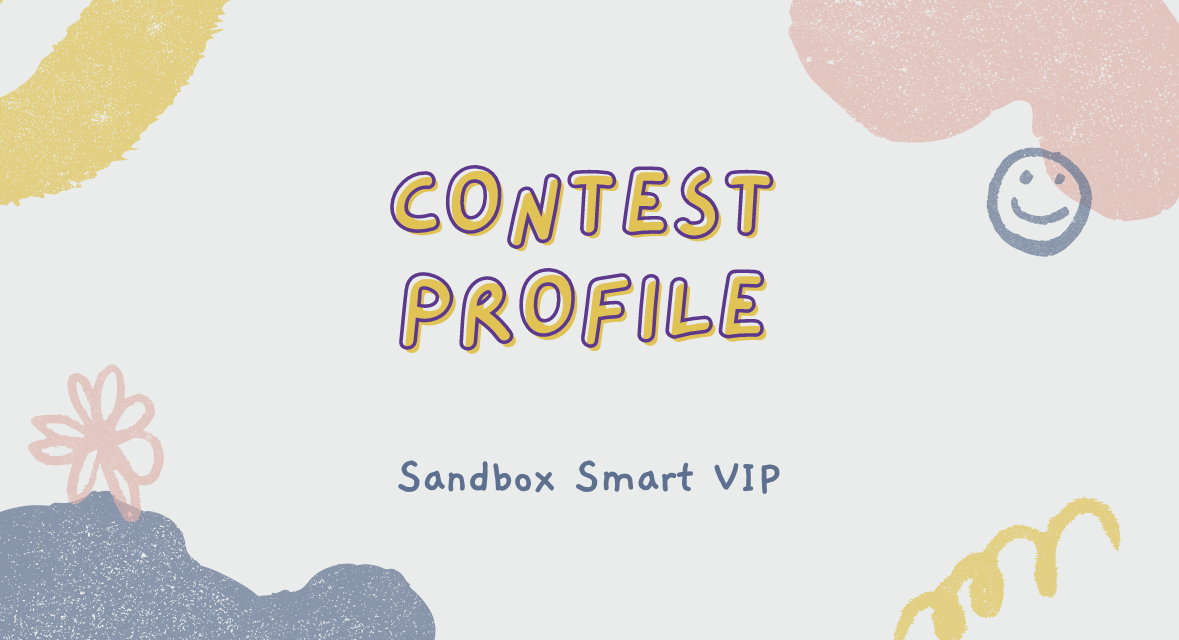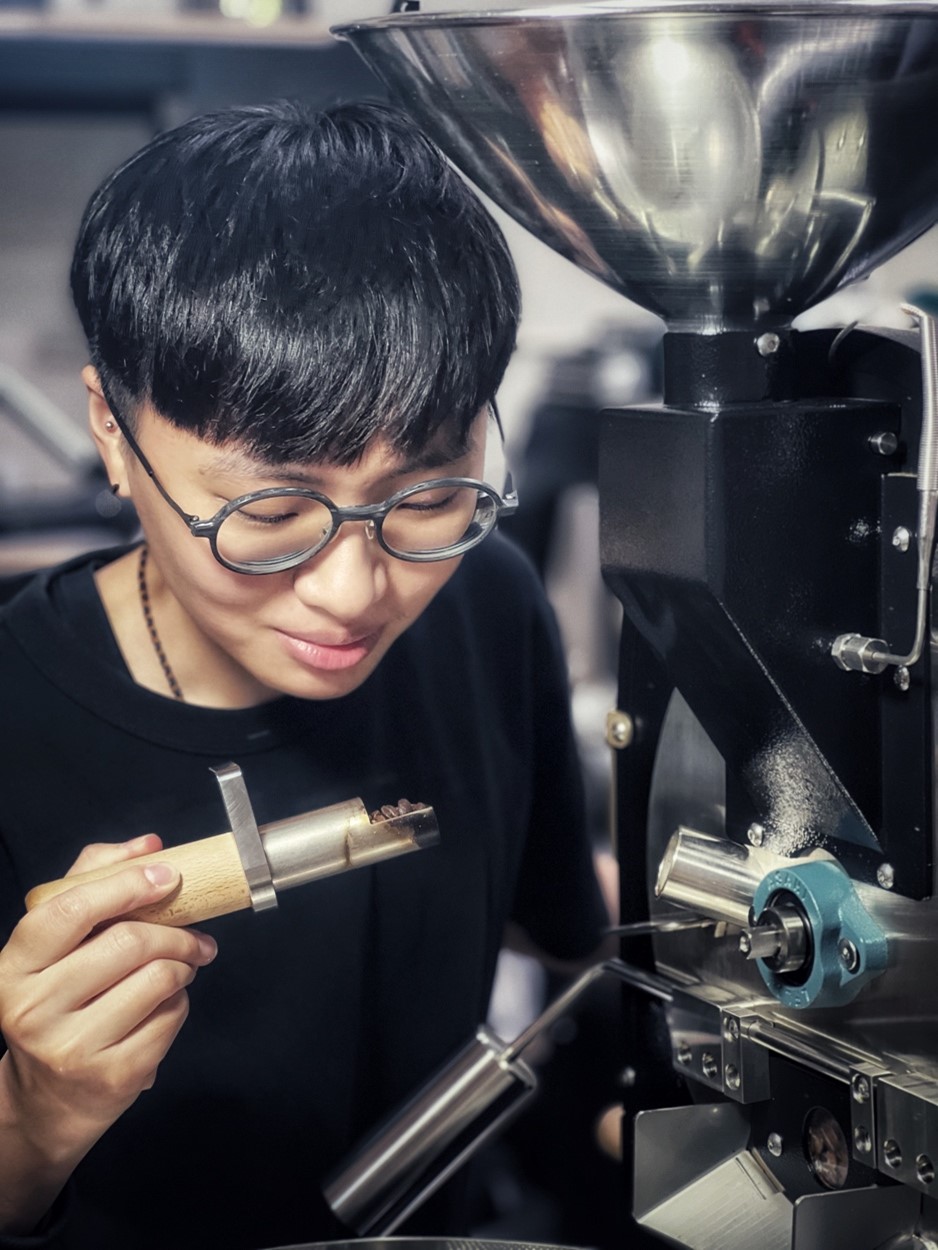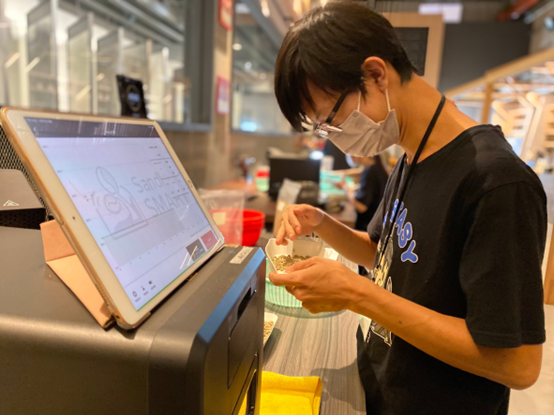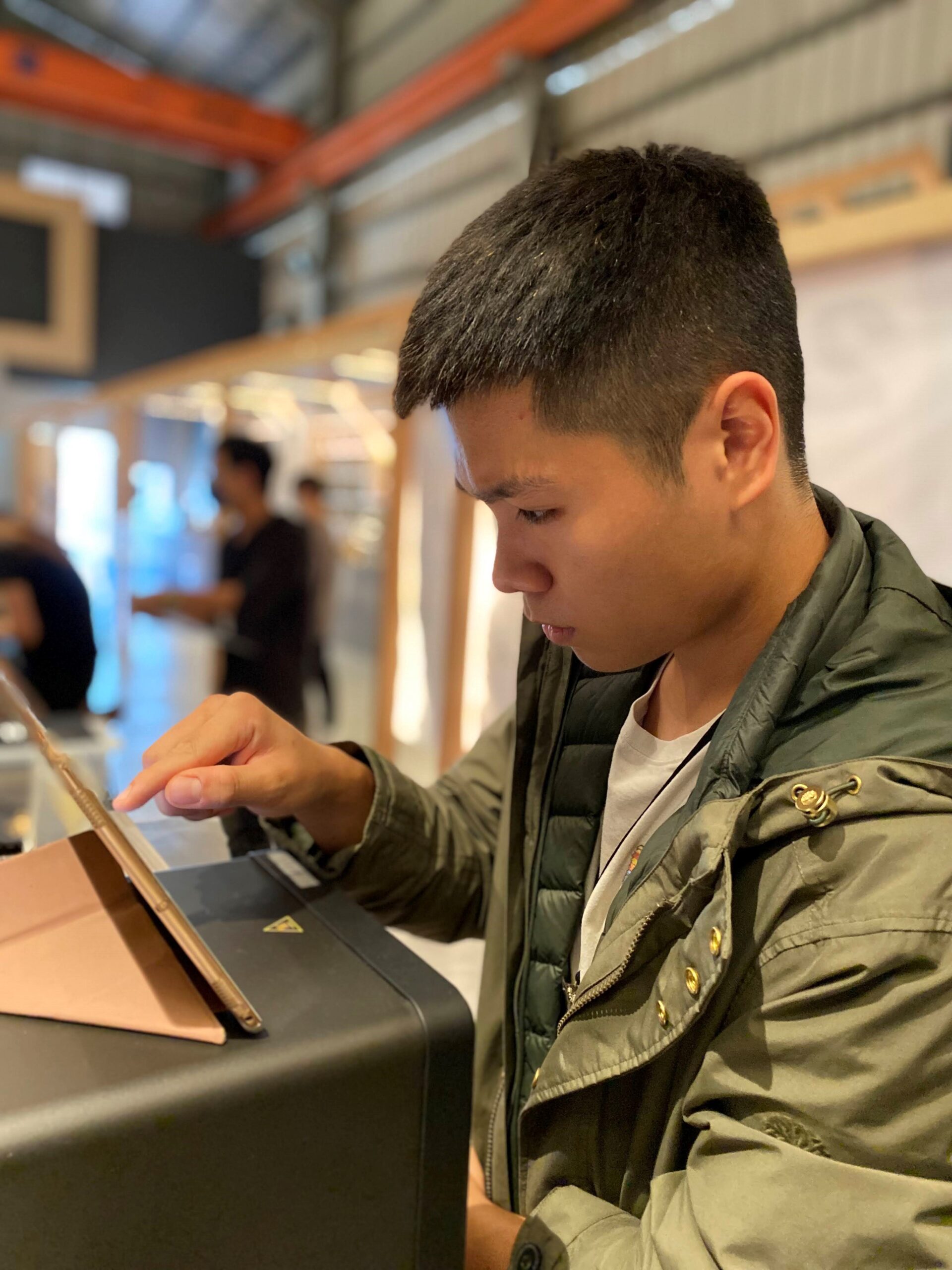
2022 Roasting Competition Competitors’ Experience Sharing
2023-02-01
-
- Ethiopia Yirgacheffe Worka Nenke Natural
- Ethiopia Yirgacheffe Aricha Washed

- Introduction:
Hello everyone, my name is Zi Xuan, Zhang. You can also call me Phoebe. I am the manager of Explorer’s Beans: Coffee Roasting Studio and in charge of roasted coffee sales. I have 2 years of experience in coffee roasting, and I am more familiar to operate the machine of the semi-hot air bean roaster. This is my first time operating an electric heating coffee roaster.
- Reasons for choosing coffee beans:
The blending ratio I use is 6:4 = Ethiopia Yirgacheffe Aricha washed : Ethiopia Yirgacheffe Worka Nenke natural, because the beans have different characteristics, I decide to blending after coffee is roasted, and I roasted 2 pots separately.
- Idea of design the profile & expected flavor performance:
Because those two beans have different characteristics, after the blind testing and different blending ratios, I decided to roast them in two pots separately. I like the natural beans’ sweet and sour taste of berries and nutty flavor, and also like the washed beans’ aroma of floral and creamy, acid, and tea taste. That is why I made a blending ratio of 6 washed: 4 natural. For the roasting profile, after several tests I found that the preheat temperature should not be too high, and the fire power should be increased slowly. Then adjust manually by Observing the changes in ROR and bean color.
- After-competition feedback:
During the competition, I have tested the coffee roaster and took the coffee back to the studio to try more than 10 kinds of blending ratios. I have also tried nearly 10 times of test roasting to find out the suitable profile. Unfortunately, we received the notice 3 days before the contest that the test roaster is returned for the maintenance and was replaced by a new one. By that time, I only had one day left to do the final test, so I ran for the final test and cupping in a hurry. Finally, the roasting profile and blending ratio of the contest are determined.
In the contest, I was worried that the time would not be enough to roast two batches. I was considered making a single-origin coffee instead, but after a blind taste test, I still felt that the layered of flavor was not as good as the blended one. After repeated practice, I recrate all steps perfectly during the contest. Luckily, the process went smoothly, and I can present the expected work with design settings.
I really like the idea that competitors can participate in the cup test together and have a discussion after the cup test. This is the most rewarding part of this contest. Everyone shared the taste note and their preferred coffee flavor, it made the contest more than just a contest but also experience exchanging. When the host called my name in the final round, I was very happy. I made it to the next stage which was to do pour-over coffee for the audience to vote. I am really honored and thankful to the audience who like my coffee and voted for me. At the final stage, I was not nervous as I was during the competition, turns out I enjoyed the whole process. I have the chance to share my favorite coffee with everyone.
The two-day competition was really fulfilling. I am very grateful to all the cooperate stores and hard-working staff who provided the venue for practice, which made the competition go smoothly and rewarded.
- Judgment comments on flavor:
Floral, berry, fermented dried fruit, plum, citrus fudge, nuts, malt, creamy, sour bright, juicy, fruity tones.

- Introduction:
Hello everyone, ~ I am Bai Chen, Zhou. The runner-up of this contest. I was invited by Sandbox Smart to share the experience and give some thoughts of the competition. To be honest, the main reason of participating this competition is to accompany my girlfriend enjoying the atmosphere of the competition, and also take this chance to meet some other coffee lovers. Due to my work schedule, I have never had the chance to participate in any coffee roasting competitions in Taiwan, so I also like to take this opportunity to test whether I am ready for competitions.
I have been working in coffee industry for more than 5 years, mainly in coffee roasting and cupping, so I want to be improved more in these two fields. I am happy that the competition can have good results.
- Reasons for choosing coffee beans:
I chose 100% washed (Aricha) this time because the flavor and acidity of natural beans (Worka Nenke) were not as good as washed one from the roasting samples. Although natural beans have good sweetness, but the defective beans make the flavor losing the washed one. Rather than blending the beans, we went 100% washed and try our best to present the clean floral and fruity notes of this bean and find the candy-like sweetness.
From the competition results, it prove that under the ideal ratio, the natural bean do bring up the flavor. Just we didn’t roast the natural bean well, or the blending ratio is not perfect.
- Idea of design the profile & expected flavor performance:
Our main idea of designing the profile was quite simple – We must “roast the coffee properly”. Under this rule and through the roasting test sample, I went for a safer method. This method uses a higher preheat temperature to increase the temperature drop between the bean and the boiler in the first stage, to ensure that the beans inner part can be fully roasted as much as possible. After the drying period, the ROR can be maintained at around 8, making the acidity smoother. In the end, set the time for about 10 minutes (batch amount: 400g), and hope that the development period will be 1 minute after the first cracking, to make a candy-like sweetness, clear acid value, and smooth coffee work.
- After-competition feedback:
First, I want to talk about the bean roaster used in this competition. Before we get to touch the R2, we have been using the R1 for sample testing and roasting settings for the competition. Here we have to shout out to the equipment for of the stability of the works. Both my girlfriend and I use the same strategy to roast the bean of this competition, but there is a difference in the control of the firepower and the completion time in the final stage. In the cupping stage, we judging each other’s work, and we both agreed that her work is lost. We feel that in this aspect the performance of this equipment is definitely worthy of recognition.
In the end, I am very happy to be able to win in this competition. I also able to examine my shortcomings in various aspects and review my ability and adaptability from preparation before roasting, profile design, etc. to actual execution. I’m looking to have the opportunity to discuss with every coffee lovers, and thank you for reading to the end.
- Judgment comments on flavor:
Fruity, floral, clean, walnut, nutty, candy-sweet, delicate, and layered.

- Introduction:
My name is Zhuo Qian, Li. I am 20 years old and from Hong Kong.
Now I’m studying in Taiwan, and I am very interested in coffee, such as pour-over coffee, roasting beans, and latte art.
- Reasons for choosing coffee beans:
Ethiopia Yirgacheffe Worka Nenke Natural: 120g (medium roast)
Ethiopia Yirgacheffe Aricha Washed: 180g (light medium roast)
Because the washed coffee beans in this competition are more standing, it has stronger floral and fruity aromas, so it was roasted lightly. The natural bean plays the part of the body thickness and sweetness of the coffee.
- Idea of design the profile & expected flavor performance:
Since it is the first time using this type of roaster (small home roaster), I imagine it as a microwave oven, so the heat conduction penetration in it must be very strong. I try to avoid the coffee beans from being overheated and bean batch roasting amount is 450g, which can help the heat evenly distributed.
The design of the two batches is to ensure that the conversion process of the beans is stable with high fire power and a large fan in the beginning. After turning yellow stage, the fan and fire power are slowly reduced till the end of roasting; trying to keep more of the flavor and reach a balance between sweet and sour.
- After-competition feedback:
This is my first time participating in a coffee roasting competition.
It was a little stressful, but fortunately I was able to present the expected flavor and roasting profile. I am also very grateful for the experience sharing and the help from many other competitors that day.
- Judgment comments on flavor:
Jasmine, lemon leaves, lemongrass, red and black berries, oranges, nuts, toast, brown sugar, toffee, cocoa

 繁體中文
繁體中文
